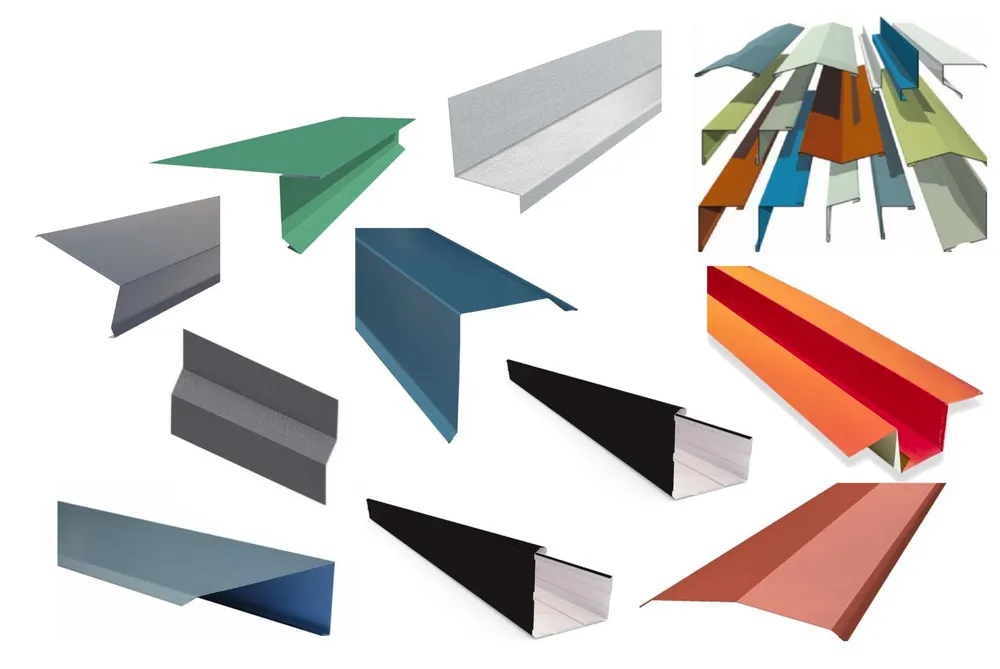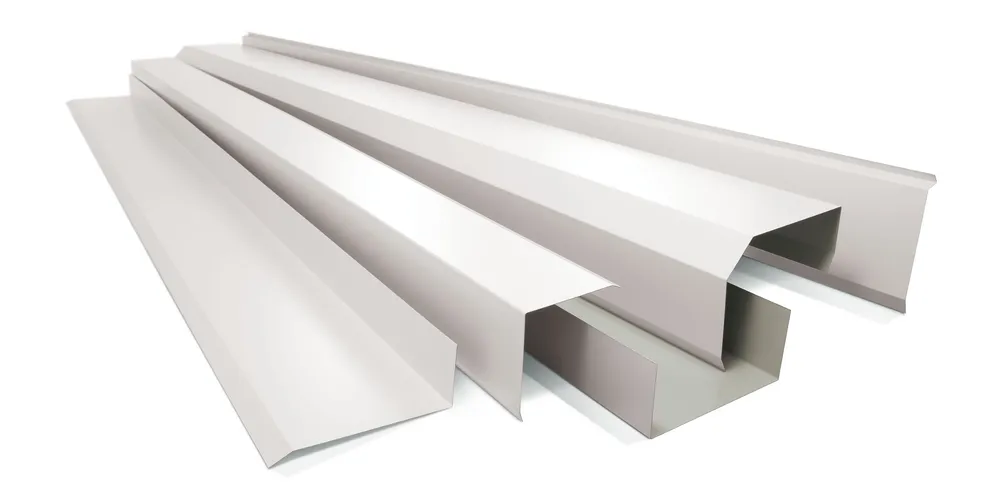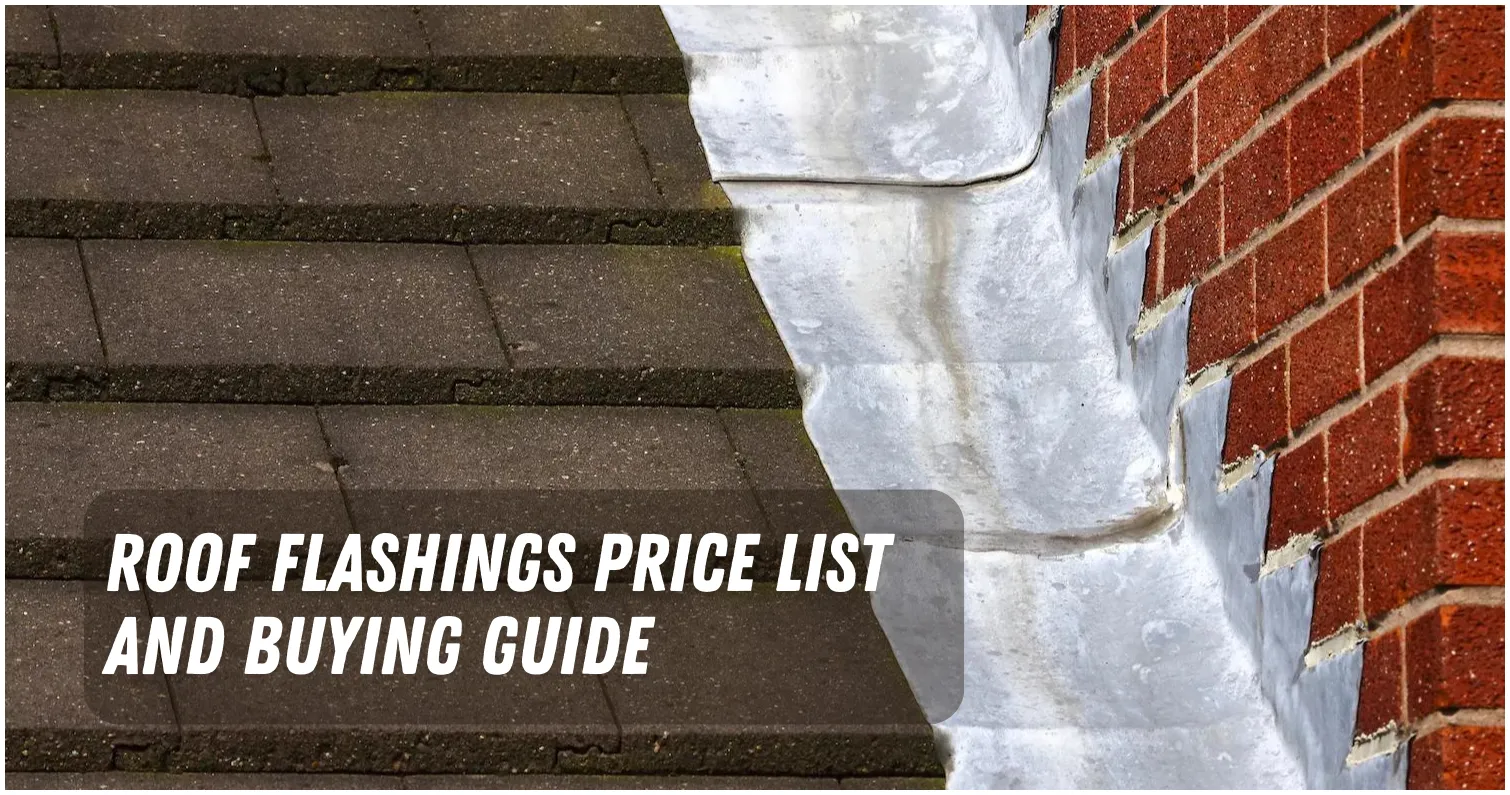If you want to protect your roof from leaks and water damage for a low price, you might want to install roof flashings.
Roof flashings are thin metal sheets that are put on the roof’s edges or joints to keep water from getting into weak spots.
They are important for any roof, but especially in the Philippines, where typhoons and heavy rains happen often.
In this article, we’ll talk about the price of roof flashings in the Philippines, which is usually between 1,200 and 1,500, as well as other things you should know about them.
What is Roof Flashing?

Flashing is an important part of a roof that keeps your home dry and safe from water damage.
Most of the time, it is made of metal, but it can also be made of plastic or rubber.
Roof flashing is put in place at key spots on the roof, like where it meets a wall, chimney, or skylight, to seal any cracks or gaps that could let water in.
Its main job is to stop leaks and moisture problems, which protects the structure of your roof and the inside of your home.
Roof Flashings Uses
Roof flashings are important to prevent water damage to the roof structure because they can do things like:
- They keep water from getting in and causing problems like rot, mold, rust, and corrosion.
- Flashings keep water from getting into weak spots and direct it to the gutter and downspout.
- They also fill in cracks and gaps between the roof and other parts of the house.
All in all, roof flashings make the roof last longer and work better, protecting insulation, wiring, and interior surfaces.
Type of Roof Flashings

Roof flashing can also have different shapes and sizes, depending on the area of the roof that needs to be covered.
Some of the common types of roof flashing are:
- End-wall flashing:
This type of flashing is applied where the upward slope of a roof meets a wall. It covers the gap between the wall and the roof shingles or tiles. - Wall flashing:
This type of flashing is applied where a wall intersects with a roof. It covers the gap between the wall and the roof deck or underlayment. - Valley flashing:
This type of flashing is applied where two sloping roofs meet at an angle. It covers the valley formed by the two roofs and directs water away from it. - Step flashing:
This type of flashing is applied where a roof meets a vertical wall or chimney. It consists of rectangular pieces of metal that are bent at 90 degrees and installed in an overlapping manner along the edge of the roof. - Drip edge flashing:
This type of flashing is applied along the eaves or lower edges of the roof. It prevents water from dripping behind the fascia board or gutter. - Vent pipe flashing:
This type of flashing is applied around vent pipes or other protrusions that penetrate through the roof. It seals the hole around the pipe and prevents water from entering it.
Roof Flashings Price List

The price of roof flashings depends on several factors, such as the type, material, size, and quantity of the flashings.
The price also varies depending on the supplier and the location. To give you an idea, here are some sample prices of roof flashings in the Philippine:
| Roof Flashings | Size | Price |
|---|---|---|
| Roofing End Flashing | 50mm x 24mm x 8ft | ₱1,200 |
| Roofing Wall Flashing | 50mm x 24mm x 8ft | ₱1,200 |
| Roofing Ridge Roll | 50mm x 24mm x 10ft | ₱1,500 |
| Roofing Valley Gutter | 50mm x 24mm x 10ft | ₱1,500 |
| Roofing Vent Pipe Flashing | 50mm x 24mm x 10ft | ₱1,500 |
These prices are subject to change without prior notice. You should always check with your roofing contractor or supplier for the latest prices and availability of roof flashings.
Roof Flashings Pros and Cons
You should be aware of the disadvantages of roof flashings as well as their many advantages for your roofing system. Here are some advantages and disadvantages of roof flashings:
Pros:
- They keep your roof from leaking and getting damaged by water in weak spots.
- They keep your roof from rotting, growing mold, and rusting, which extends its life.
- They make your roof look better by creating a smooth transition between different surfaces.
- They keep your roof from needing repairs and upkeep as often.
Cons:
- Depending on the type and material of the flashing, they can be expensive.
- They can be hard to install properly without the help of a professional.
- They can be damaged by bad weather or by not being set up right.
- They can cause problems if they don’t work with other roofing materials or components.
Roof Flashings Alternatives
If you’re considering alternatives to roof flashings, here are some options to explore:
Sealants:
Waterproof substances applied to gaps or joints between surfaces, made of materials like silicone, acrylic, or polyurethane.
Suitable for sealing windows, doors, vents, pipes, and skylights. However, they can deteriorate, crack, or shrink with time and exposure to the elements.
Caulks:
Similar to sealants but more rigid and less flexible. Used to fill cracks or holes in roofs or walls, available in latex, butyl, or other materials.
They work for caulking chimneys, gutters, or siding. However, caulks may degrade, crack, crumble, or discolor over time.
Tapes:
Adhesive strips for bonding or joining surfaces together, made of rubber, vinyl, foil, or other materials. Useful for taping vents, pipes, or seams.
Keep in mind that tapes may lose stickiness, tear, wrinkle, or curl due to moisture or heat.
Thing You Should Know about Roof Flashings
Before you decide to install roof flashings on your roof, there are some things that you should know about them. Here are some of the frequently asked questions about roof flashings:
- Do all roofs need flashing?
Yes, all roofs need flashing to prevent leaks and water damage in specific areas, although the type and amount of flashing may vary depending on the roof’s design and structure. - What is the difference between flashing and gutter?
Flashing and gutter are both roofing accessories that help manage water. Flashing is used at the roof edges where it meets other surfaces like walls or windows to prevent water infiltration. On the other hand, gutters are installed along the eaves to collect rainwater and direct it away from the foundation. - What is the best type of roof flashing?
The best type of roof flashing depends on various factors, such as the roof’s shape, material, color, budget, personal preference, and the expertise of the installer. It’s advisable to consult a roofing contractor or supplier to find the most suitable flashing for your roof. - Where is flashing applied on a roof?
Flashing is applied on areas of the roof prone to water leakage or damage, such as along the edges, where it meets walls, windows, posts, or where two roofs intersect. It’s also used around vent pipes, chimneys, and other protrusions. - Can roof flashing be exposed?
Yes, roof flashing can be exposed if it’s made of durable and attractive material that matches or complements the roof’s aesthetics. However, some types of flashing may need to be covered by shingles or siding for functional or visual purposes.
We hope this article help you find top-quality roof flashings in the Philippines at affordable prices.
[ratings]

